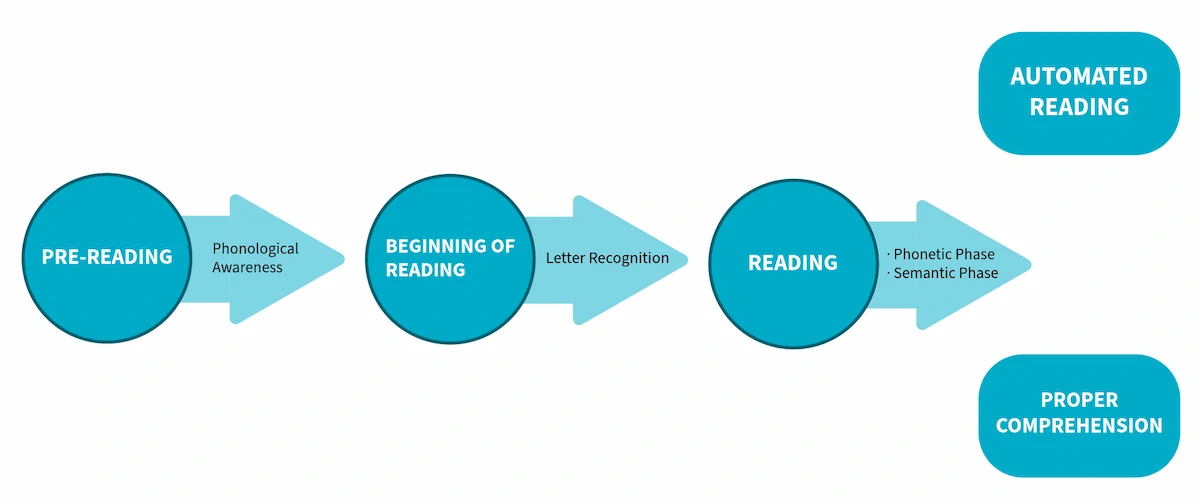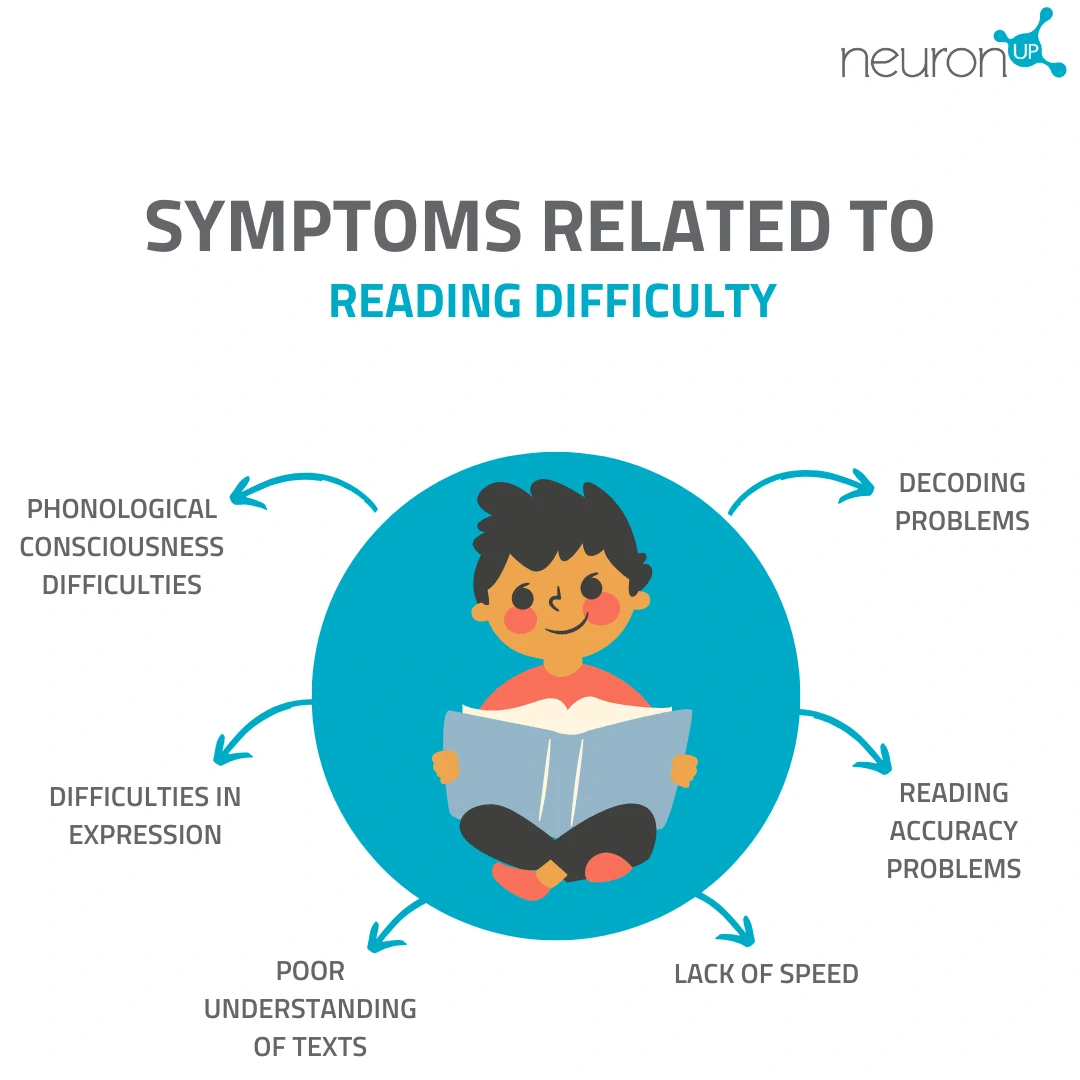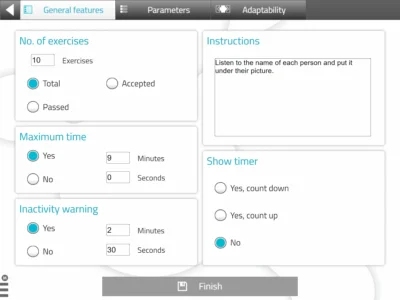The Aldu Center for Childhood and Adolescence Support explains reading problems, the most frequent reading difficulties and how to train reading problems.
Aldu is a neuropsychological therapeutic center, where we treat and work on motor and developmental problems arising from development in children and adolescents, as well as learning difficulties and problems derived from the academic field. For this we have a complete group of professionals from different therapeutic areas to provide a comprehensive and complete response to these difficulties.
We start from a complete evaluation of all those areas that can influence development, with the aim of finding out where the problem lies in order to tailor the therapy to the specific focus that generates those difficulties.
The importance of reading in the academic field: children with reading problems
Reading is the cornerstone of learning; without a good development of the reading process it is difficult to obtain good academic results in the rest of the competencies. It impacts most academic areas.
Learning to read is a continuous process that goes through different phases. We understand it as an obstacle race.
Phase 1: Processes prior to reading
In this obstacle race the start line consists of those processes prior to reading, but necessary for learning it to take place without impediments. These include a good development of processes related to motor development, the definition of laterality, the correct evolution of both vision and hearing, etc.
In short, it is necessary to have good foundations for reading skill to develop normally.
Phase 2: Phonological awareness
Continuing with the race metaphor, the second phase would be developing good phonological awareness. It is a prerequisite for starting the phonetic phase.
Phase 3: Phonetics
In the phonetic phase the decoding process begins; this phase is decisive to achieve quality reading. The process to achieve good decoding is long but necessary; the better the decoding, the greater the reading speed.
Phase 4: Semantics
With reading speed we would reach the finish line of our race, where reading becomes automated and there are no barriers to a good comprehension of the text we are reading. We call this the semantic phase.

There are many factors of the reading process necessary for quality reading, and they are closely related. The better the decoding of a text, the higher the reading speed, and this improves comprehension. The cognitive processes in charge of this task focus on the semantic aspects of the text when the phonetic ones are carried out automatically.
Good, agile and quality reading substantially facilitates studying, since we spend less time on this task and comprehension becomes easier. It greatly helps to smooth the path to learning.
Most frequent reading problems: when there are reading difficulties and how to train them
One of the most frequent reading problems we encounter in the clinic is mastering reading; acquiring the necessary strategies for this skill is not always easy. Acquiring semantically quality reading involves a process that we represent as a continuum, with three different phases:
- Pre-reading (phonological awareness),
- reading initiation (letter recognition),
- reading (from the phonetic phase to the automatization of reading or semantic phase).
Symptoms related to reading difficulty
In these phases, various symptoms directly related to the reading process may appear, such as:
- Difficulty with phonological awareness,
- problems in decoding,
- difficulties in expression,
- problems of reading accuracy,
- lack of speed,
- poor text comprehension,
- etc.

How to detect reading problems? Reading difficulty tests
But these are only symptoms of inherent problems that need to be located for an accurate and effective intervention. As an initial step for a reliable diagnosis it is important to carry out a review of the information input pathways, vision and hearing, also assess laterality or hemispheric dominance and motor development, as well as higher executive functions, cognitive flexibility, planning and organization, language, etc.
In addition, it is also essential to assess the neurological bases necessary to achieve reading competence of quality in all its areas.
How to train reading problems
Once the relevant tests have been carried out and the problem has been located, we begin the therapy or training. To do this, it is necessary to work where needed and on those parameters necessary to achieve the aforementioned reading competence.
Concepts related to reading that are important to master
Regardless of the traditional methods used in the clinic to work on the process of improving reading, it is also necessary to work on those concepts related to reading that are important to master in order to read properly, such as:
- Phonological awareness,
- good decoding,
- working on expression,
- improving reading accuracy (reading without making mistakes),
- the comprehension of the material we are reading, as well as interpretation and inference of texts.
Benefits of training reading difficulties with NeuronUP
Working with NeuronUP has made this complex task much easier for us, since with its numerous activities we can stimulate those capacities required for reading such as:
- Visual acuity,
- letter localization,
- the phoneme repetition process,
- expression,
- etc.
NeuronUP also promotes the reading and discrimination of both words and pseudowords and helps create the visual routes necessary to achieve optimal reading ability.
The process of acquiring quality reading is complex and long-term. And when difficulties arise in achieving this goal, the process becomes even harder, which is why it is important to keep the child highly motivated. In this sense, NeuronUP helps to achieve this, since all its activities are based on play and from a playful perspective, which favors motivation and adherence to therapy.

Working from home
Another valuable benefit that NeuronUP provides us is the possibility to work daily on all these components from home. This means working from the safety provided by the home and has the advantage of being able to train reading every day; this aspect is of vital importance, since it provides the repetitive pattern necessary to achieve automated reading.
“NeuronUP allows you to create a tailor-made suit, therapeutically speaking”
NeuronUP offers increasing levels of difficulty, which makes it possible to program a treatment suitable to each child’s level and to progress at an individualized pace adapted to the circumstances and moments of each child. It’s like making a tailor-made suit, therapeutically speaking.
Working with NeuronUP also enables learning to read for children with developmental delay, as it offers a comfortable, easy and fun way to engage with the world of letters.
The discovery of approaching reading differently
When we began working with NeuronUP we did not view the program as a therapeutic option to address reading problems, but rather as a cognitive stimulation treatment for more neurological disorders.
After becoming familiar with the program and its activities we observed that reading mastery could also be addressed, because NeuronUP includes specific activities to work on the cognitive aspects inherent to reading, which could promote its improvement.
Over the course of these months we have obtained very good results and have managed to accelerate the reading automatization process of many children.
NeuronUP offers us a different, comprehensive approach to working on reading difficulties.
If you liked this article about reading problems, you might also be interested in:
“This article has been translated. Link to the original article in Spanish:”
Problemas de lectura: cómo entrenar las dificultades de lectura






 Online Speech Therapy: Methodology and Speech Therapy Exercises
Online Speech Therapy: Methodology and Speech Therapy Exercises
Leave a Reply